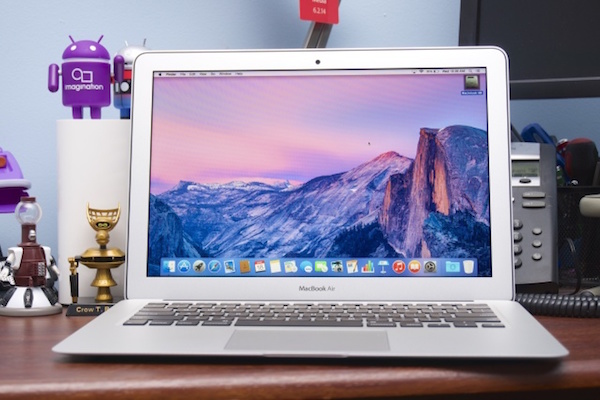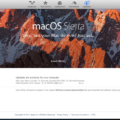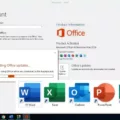If you’re looking for a reliable and powerful laptop that won’t break the bank, the Apple MacBook Air is a great choice. It’s an incredibly lightweight and sleek laptop that packs some of the most impressive specs on the market, making it perfect for everyday computing tasks. But like any tech device, it requires regular updates to keep it running smoothly and efficiently. In this blog post, we’ll explain how to update your Apple MacBook Air so that you can get the most out of your device.
The first step in keeping your Apple MacBook Air up-to-date is to check for software updates. To do this, open the “System Preferences” window by clicking on the Apple logo in the upper left corner of your screen and then selecting System Preferences from the drop-down menu. Select “Software Update” from the System Preferences window and click “Check Now” to see if any updates are available for your laptop. If there are updates available, click “Install” to start downloading them onto your device.
If you don’t see any software updates available in System Preferences, you may need to update your operating system (OS). To do this, select “Software Update” again and then choose “Advanced… > Download macOS Updates Automatically.” This will enable automatic updates so that whenever a new version of macOS is released, it will be downloaded and installed on your Macbook Air automatically.
Finally, make sure to also update any applications or programs that you have installed on your laptop as well as any firmware or drivers for peripherals connected to it (like printers or external hard drives). To do this, head over to each application or program’s website or support page and look for information about available updates. Make sure to follow their instructions carefully when downloading and installing new versions of these programs on your computer.
Updating both software and hardware regularly is essential in order to keep your Apple MacBook Air running smoothly and efficiently over time. By following these steps regularly you can ensure that you get maximum performance from your laptop so that you can continue using it without interruption!

Updating a MacBook Air Mac
Updating your MacBook Air Mac is easy! First, make sure you have the latest version of macOS installed. To do this, open the Apple menu and select System Preferences. Then click General in the sidebar and select Software Update on the right. If there are any available updates, you can install them from here. You can also update software downloaded from the App Store by clicking the Apple menu; any available updates will be shown next to App Store. Finally, make sure to back up all your important data before proceeding with any updates.
Troubleshooting MacBook Air Update Issues
If you’re having trouble updating your MacBook Air, there are a few potential issues you should consider. First, make sure that you have enough RAM and storage space to download the update. If you don’t have enough space, try clearing some files or transferring them to an external drive. You can also try restarting your computer and downloading the update manually. Finally, if none of these solutions work, try booting into safe mode or repairing your hard drive in Disk Utility.
Is Updating My MacBook Air Possible?
It depends on which model of MacBook Air you have. If you have a MacBook Air from late 2012 or later, then you should be able to upgrade to at least macOS 10.15 Catalina. To see if your computer can run macOS 11 Big Sur, check Apple’s compatibility info and installation instructions. If your MacBook Air is older than late 2012, then it may not be able to support the new operating system updates.
Do I Need to Update My MacBook Air?
Yes, your MacBook Air should be updated regularly. It is important to keep your computer up-to-date with the latest software updates in order to ensure that it is running at peak performance levels and is secure against the latest security threats. When a new update is available, you can typically find it in the App Store. You can also check for updates in System Preferences > Software Update. It is recommended that you install these updates as soon as they become available.
Troubleshooting Mac Update Issues
If your Mac isn’t showing an update, it could be due to a few reasons. First, make sure you’re connected to the internet and that your system is up-to-date with the latest security updates. It’s also possible that there is a problem with the Apple servers or with the network connection from your Mac to the Apple servers. Additionally, it could be a bug within OS X itself or another application that is preventing the update from appearing in the App Store. If after verifying your internet connection and updating any security patches you are still unable to see an update, try restarting your Mac and waiting for a while before checking again. If these steps don’t resolve the issue, contact Apple Support for further assistance.
Updating an Old Mac That Won’t Update
Updating your old Mac can be a challenge, but there are steps you can take to get it done. First, you’ll want to check that your Mac has enough storage space to install the update. If not, you may need to free up some space before proceeding. Once you have enough storage, restart your Mac and make sure your Wi-Fi connection is working properly. Then check for any server errors that may be preventing the update from happening. Next, reset your computer’s NVRAM by holding down Command + Option + P + R during startup until you hear two startup chimes. After that, try booting into safe mode and running the update from there. If that doesn’t work, try downloading the Combo Update, or setting the date & time on your Mac to automatic if it’s not already set this way. Hopefully one of these tips will help get your Mac updated in no time!
Updating the Oldest Mac
The oldest Mac you can update is the Mac Pro, released in late 2013. Note that this model will only be able to run macOS 10.13 High Sierra and not any of the newer versions of macOS. Other Mac models from early 2015 or later, such as the MacBook Air, MacBook Pro, Mac mini, iMac, and iMac Pro, all support macOS 11 Big Sur.
Conclusion
In conclusion, the Apple MacBook Air is a great laptop for anyne looking for a lightweight and reliable machine. It is powerful enough to tackle everyday tasks with ease, while also providing great battery life and portability. Its slim profile and sleek design make it a great option for business people on the go, students, or casual users. It features the latest macOS operating system, so you’ll have access to all the latest software and updates from Apple. The MacBook Air is an excellent choice for anyone looking for an all-in-one laptop that won’t weigh them down.








